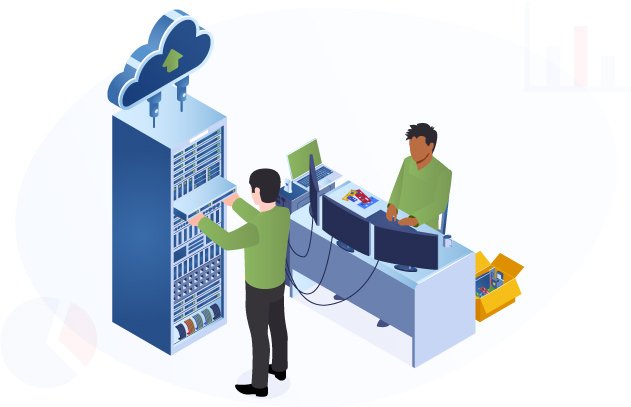Self-hosting your site will give you the full control over it, flexibility when choosing, and cost saving. In this guide, we take you through installing a network for self-hosting, highlighting main components, configurations, and tips. We also recommend using Cat6 plenum Ethernet cable for the maximum performance.
Understanding Self-Hosting
This means hosting a website on your own server instead of using an external hosting service. In self-hosting, you are allowed to be much more independent and control the functionalities of your website and hence the performance of your website.
Advantages of Self-Hosting
1. Control: You get to decide about the configuration of the server as well as the software and resources.
2. Saves Cost: The hosting charge gets trimmed with time
3. Flexibility: You can install any software and applications you prefer
Disadvantages of Self-Hosting
1. Technical Knowledge: Some experience with server management.
2. Security: It is your responsibility to secure your server.
3. Maintenance: Updates and troubleshooting are needed in regular cycles.
Essential Components for Self-Hosting
To set up your self-hosting network, you’ll need several critical components:
1. Server Hardware
Your server can be a dedicated machine, a virtual private server (VPS), or a cloud service. Choose hardware that meets your site’s needs.
2. Internet Connection
A stable and high-speed internet connection is vital for self-hosting. Consider a plan with sufficient upload speed, as this affects website performance.
3. Domain Name
Register a domain name to make your website accessible. Choose a name that reflects your brand or content.
4. Operating System
Select an operating system (OS) for your server. Popular choices include Linux distributions (like Ubuntu or CentOS) and Windows Server.
5. Web Server Software
Install web server software like Apache, Nginx, or Microsoft IIS to serve your website content to users.
Setting Up Your Network
Once you have the components, follow these steps to set up your self-hosting network.
Step 1: Choose an IP Address Configuration for Your Network
Choose between a static and dynamic IP address to be utilized in your server. For self-hosting, you will need a static IP since it will provide your website with a fixed address.
Step 2: Cat6 Plenum Cable Installation
Plenum-rated Cat6 ethernet cable will perfectly suit all types of wire networking for cable networking. Owing to its excellent fire-resistant property, data transfer speed is highly impressive and appropriate for in-wall cable installation.
Why Cat6 Plenum Cable?
– Speed: Offers 1 Gbps
– Distance: Provides distance increase up to 328 feet
– Safety: Plenum-rated cable is safer indoors since it will be used indoors in the air ducts.
Step 3: Connect Your Devices
Connect your server to the router with a Cat6 plenum cable. Make sure all your connections are secure and firm so as to avoid data loss.
Step 4: Configure Your Router
Access your router settings through a web browser. Assign a static IP to your server and configure port forwarding. This step allows external access to your server.
Port Forwarding Explained
Port forwarding directs external requests to specific ports on your server. Common ports for web hosting include:
– HTTP: Port 80
– HTTPS: Port 443
Step 5: Install Web Server Software
Install your chosen web server software on the server. Follow the installation instructions specific to your OS. Common commands for Linux include:
sudo apt update
sudo apt install apache2
Step 6: Configure Your Domain Name
Register DNS records with your domain name registrar. Your domain will point to your static IP address. This means your users will have access to your website.
DNS Record Types
1. A Record: Links your domain to your IP address.
2. CNAME Record: Points subdomains to your main domain.
Step 7: Secure Your Server
Implement security measures to protect your server and website. Consider these essential practices:
– Configuration of Firewall: Setup of a firewall that will block the access of unauthorized users.
– SSL Certificate should be installed, so HTTPS becomes possible.
– Regular Updates: Keep your OS and software updated to prevent vulnerabilities.
Testing Your Setup
Once everything is configured, test your website’s accessibility. Use different devices and internet connections to ensure it works properly.
Using Online Tools
Some of the online tools that help you in identifying connectivity issues include ping and traceroute. You can determine the time it would take to get a response from your site, whether it is accessible or not.
Troubleshooting Common Issues
Self-hosting can present challenges. Here are common issues and how to resolve them.
1. Website Not Accessible
Check your domain settings and ensure the DNS records point to your static IP. Verify port forwarding on your router is configured correctly.
2. Slow Loading Times
Use Cat6 plenum Ethernet cable to ensure high-speed connections. Check your server resources and consider upgrading if necessary.
3. Security Breaches
Regularly update your software and use strong passwords. Monitor your server logs for suspicious activity.
Best Practices for Self-Hosting
Follow these best practices to ensure a smooth self-hosting experience.
1. Regular Backups
Implement a backup strategy to safeguard your data. Use automated solutions or manual backups as needed.
2. Performance Monitoring
Monitor the performance of your website through tools like Google Analytics. Keep changing your settings based on what users feedback and what analytics tell you.
3. Documentation
Keep detailed documentation of your setup and configurations. This practice will aid troubleshooting and future upgrades.
Conclusion
There is no task as exciting and rewarding as setting up an own network to host one’s website. With correct components, including plenum Ethernet Cat 6 cable, you can have a secure environment for hosting. You will easily find your way through all the outlined steps and best practices to a very successful self-hosting experience.

